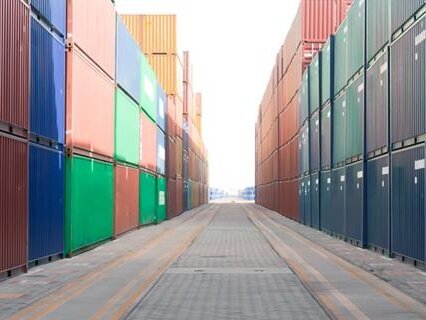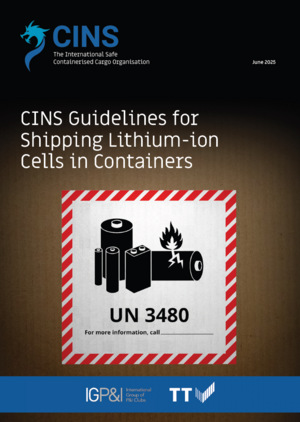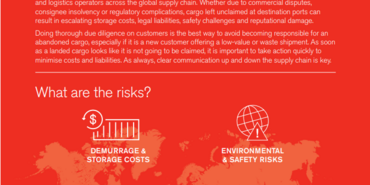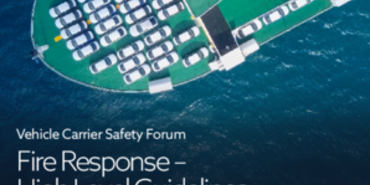Lithium-ion Cell Shipping: CINS Safety Guide
The Cargo Incident Notification System (CINS) has published comprehensive guidelines for safely shipping lithium-ion cells in containers, addressing the growing risks associated with these dangerous goods. Developed in collaboration with international maritime organisations, these guidelines provide essential safety standards for transport & logistics operators handling lithium-ion cells classified under UN 3480 and 3481.
Lithium-ion cells present significantly higher transportation risks than complete batteries due to their structural differences and manufacturing variations. The guidelines emphasise that quality control procedures during manufacturing are crucial for identifying and rejecting defective cells before transport, reducing potential hazards during shipping operations.
The document distinguishes between various cell types, including large cells (over 500g gross mass) and button cells, each requiring specific handling protocols. Lithium-ion cells pose multiple hazards including fire risks from flammable electrolytes, chemical reactivity leading to explosions, toxic emissions such as hydrogen fluoride, and environmental contamination risks if improperly handled.
Regulatory Framework and Special Provisions
Three key special provisions govern lithium-ion cell transport: SP188 allows exemptions from full IMDG Code requirements for cells meeting specific criteria, including watt-hour ratings not exceeding 20Wh for individual cells. SP376 covers damaged or defective cells requiring enhanced safety measures, whilst SP377 addresses cells destined for disposal or recycling.
For cargo handling facilities, proper packaging selection is critical. New cells passing UN38.3 testing use P903/LP903 packaging, whilst damaged cells require P908/LP904 specifications. Cells liable to dangerous reactions need P911/LP906 packaging with enhanced protective measures.
Container stuffing requires minimum 30cm gaps between cargo and container ceiling and doors, preventing packages from contacting container walls. Random inspections should verify packaging compliance, check for temperature anomalies using thermal imaging, and confirm proper documentation including UN38.3 test summaries for SP188 shipments.
Stowage requirements mandate Category A positioning (on deck or under deck) for standard shipments, whilst damaged or defective cells require Category C (deck only) stowage. The guidelines recommend positioning containers minimum two 40-foot bays from accommodation areas, with protection from direct sunlight and heat sources. Effective claims management & digital services become essential when incidents occur despite preventive measures.
Key Takeaways
- Lithium-ion cells present higher transportation risks than complete batteries due to structural differences
- Three special provisions (SP188, SP376, SP377) govern different cell conditions and transport requirements
- Minimum 30cm spacing required between cargo and container walls/ceiling during stuffing operations
- Damaged or defective cells must be stowed on deck only with enhanced packaging protection
- Random inspections should include thermal imaging to detect temperature anomalies
- Quality control during manufacturing is essential for identifying defective cells before transport
Frequently Asked Questions
What makes lithium-ion cells more dangerous than lithium-ion batteries during transport?
Lithium-ion cells are individual components with higher risk profiles due to manufacturing variations and lack of integrated battery management systems, making them more susceptible to thermal runaway and safety failures.
When can lithium-ion cells be shipped under SP188 exemptions?
Cells qualify for SP188 exemptions when individual cells don't exceed 20Wh rating, pass UN38.3 testing, are properly packaged in inner containers, and include appropriate lithium battery markings.
What special stowage requirements apply to damaged lithium-ion cells?
Damaged or defective cells must be stowed on deck only (Category C), positioned minimum two 40-foot bays from accommodation, protected from sunlight and heat sources, with enhanced packaging meeting P908/LP904 or P911/LP906 specifications.
Documents
CINS_Lithium-ion_Cells_Guidelines_June_2025__003_.pdf (1.14 MB) 25/06/2025
- Date
- 02/07/2025






